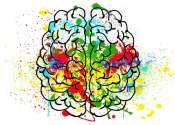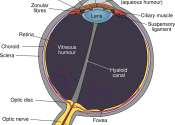Last update:
Radiology & Imaging news
Neuroscience
Miniature microscope captures real-time voltage signals in awake animals
Researchers have built a tiny, lightweight microscope that captures neuron activity with unprecedented speed that can be used in freely moving animals. The new tool could give scientists a more complete view of how brain ...
Dec 5, 2025
0
0
Visualizing neural connections in 3D with a new microscopy technique
Leiden researchers can now visualize the connections between brain cells. Their microscopy technique could significantly advance the human quest to understand brain functions. The study is published in the Proceedings of ...
Dec 4, 2025
0
0

Air pollution linked to more severe heart disease
Long-term exposure to common air pollutants is associated with more advanced coronary artery disease—with notable differences between women and men—according to a large-scale study of more than 11,000 adults presented ...
Dec 4, 2025
0
0

Noninvasive imaging could replace finger pricks for people with diabetes
A noninvasive method for measuring blood glucose levels, developed at MIT, could save diabetes patients from having to prick their fingers several times a day.
Dec 3, 2025
0
19

Telling women they have dense breasts as part of mammography screening may have unintended effects
Recommendations introduced in Australia and being considered in the UK to tell women if they have dense breasts as part of their screening results may have unintended effects and increase demand on health services, finds ...
Dec 3, 2025
0
25

Kim Kardashian's brain scan shows 'low activity' and holes. I'm a brain expert and I have questions
A recent episode of "The Kardashians" shared some startling news about Kim Kardashian's brain.
Dec 3, 2025
0
0

Women who receive mammograms also undergo lung scans if notified of eligibility
While most women over age 50 schedule mammograms for breast cancer, only a minority who are also eligible for low-dose CT scans for lung cancer undergo those potentially lifesaving screenings. A new study shows that targeted ...
Dec 3, 2025
0
0

Ultrasound pinpoints vascular complications from cosmetic fillers
Ultrasound can aid in treating complications from cosmetic filler injections, according to research being presented at the annual meeting of the Radiological Society of North America (RSNA).
Dec 3, 2025
0
0

Intimate partner violence injury patterns linked with suicidal behavior
Victims of intimate partner violence with suicidal behavior have characteristic injury patterns on medical imaging, according to a study presented at the annual meeting of the Radiological Society of North America (RSNA). ...
Dec 2, 2025
0
0

Lung cancer should no longer be defined by fear and stigma, experts say
For decades, lung cancer has been associated with stigma, anxiety, and loss. Advances in screening, therapeutics, and survivorship have created a new reality; lung cancer is treatable, survivable, and increasingly understood ...
Dec 1, 2025
0
0

Study reveals alarming number of invasive breast cancers in younger women
A study of data from seven outpatient facilities in the New York region found that 20–24% of all the breast cancers diagnosed during an 11-year period were found in women aged 18 to 49, according to research being presented ...
Dec 1, 2025
0
1

'Beer belly' linked to heart damage in men
A large study using advanced imaging found that abdominal obesity, sometimes referred to as a "beer belly," is associated with more harmful changes in heart structure than overall body weight alone, especially in men.
Dec 1, 2025
0
1

Researchers develop 3D scanning approach for ultra-precise brain surgery
Mayo Clinic researchers have developed and tested a new 3D surface scanning approach that gives neurosurgeons even greater precision when operating deep inside the brain.
Dec 1, 2025
0
0

MRI-based study finds gender gap in knee injuries
One of the largest MRI-based studies comparing knee injuries between men and women reveals surprising differences in injury patterns based on gender and age.
Nov 30, 2025
0
1

X-ray imaging captures the brain's intricate connections
An international team of researchers led by the Francis Crick Institute, working with the Paul Scherrer Institute, has developed a new imaging protocol to capture mouse brain cell connections in precise detail. In work published ...
Nov 27, 2025
0
57

10-minute scan could help millions with hard-to-treat high blood pressure
A speedy new scan could improve how millions of people with high blood pressure are treated, suggests a new study led by UCL (University College London) researchers.
Nov 26, 2025
0
66

A simple neck scan could detect men at high risk of heart failure
A simple neck scan can identify men with double the risk of heart failure, according to research led by University College London.
Nov 26, 2025
0
52

Pro fighters risk damage to the brain's 'garbage disposal'
The brain's waste-clearing system significantly declines in function with repeated head impacts, according to a new study of cognitively impaired professional boxers and mixed martial arts fighters. The findings are being ...
Nov 26, 2025
0
0

AI tops density in predicting breast cancer risk
An image-only artificial intelligence (AI) model for predicting the five-year risk of breast cancer provided stronger and more precise risk stratification than breast density assessment, according to a study presented at ...
Nov 26, 2025
0
0

Lower limb morphology in endurance runners reveals a human advantage
Humans are among the most capable long-distance runners in the animal kingdom. However, body shape and composition vary individually, reflecting adaptations to common movement patterns. In running, the extended lower limb ...
Nov 26, 2025
0
0

An fMRI marker of Alzheimer's-related cognitive decline
Researchers at Université Savoie Mont Blanc, Radboud University and the University of Oxford's Wellcome Center for Integrative Neuroimaging, report that attenuation of the brain's intrinsic anticorrelation between the default ...

Shape of your behind may signal diabetes
The shape of the gluteus maximus muscle in the buttocks changes in different ways with aging, lifestyle, frailty, osteoporosis and type 2 diabetes, and these changes differ between women and men, according to new research ...
Nov 25, 2025
0
4

Routine first trimester ultrasounds lead to earlier detection of fetal anomalies, finds study
Scanning for serious structural issues in fetuses during the first trimester can result in earlier detection of these issues, reports a new study led by Aris Papageorghiou at the University of Oxford, United Kingdom, published ...
Nov 25, 2025
0
0

AI detects first imaging biomarker of chronic stress
Using a deep learning AI model, researchers identified the first-of-its-kind biomarker of chronic stress detectable through routine imaging, according to research presented at the annual meeting of the Radiological Society ...
Nov 25, 2025
0
0













































